Knowing when to hold, when to fold
Published on October 26th, 2017
Following hot on the tail of ex-hurricane Ophelia, Storm Brian arrived to the eastern shores of Ireland at the untimely moment an elite Optimist training camp was docking out. Thankfully, no one was injured, but now in a search for answers, W M Nixon reviews the incident for Afloat.ie.
“A boat, by God, it’s just a gleamin’ beautiful creation. And when you pull the sail up on a boat, you’ve got a little bit of somethin’ God-given. Man, it goes bleetin’ off like a bird wing, you know, and there’s nothin’ else like it.”
The speaker was Clark Mills of Clearwater, Florida, who very rightly was recently inducted posthumously into the US National Sailing Hall of Fame.
In 1947, Clark Mills developed the design of the Optimist dinghy for the kids of his community in response to a request from two public-spirited citizens, who reckoned that a hyper-economical little sailing boat would encourage children to interact positively with the warm and wonderful sailing waters of their sun-blessed neighborhood.
Clark Mills was an ingenious back-street boatbuilder whose seemingly unassuming design was so clever that three Optimists could be built out of four sheets of standard 8ft x 4ft marine plywood. But it remained a localized way of making sailing accessible until a Scandinavian sail training ship was in port, and the captain was very impressed with these little sailing prams.
So he took one of them on board his tall ship, and brought her home to Sweden, and that was the end of the Age of Innocence for the Optimist dinghy. Once the Scandinavians had decided that these wonderful little boxes were the future of sailing for their young children despite their own tradition of very elegant sailing craft, the Optimist dinghy went global, and now more than 300,000 have been built.
It’s far indeed from the balmy sandy islands of Clearwater to the old granite pond of Dun Laoghaire on a late October Saturday, when the cream of Irish Optimist sailing – sixteen young helms from all over Ireland and their rather expensive boats – have been assembled on a long-planned, intensive and costly training session with a coach who is renowned for his ability to empathize with the junior sailors, and greatly improve their performance.
The pressure is on for busy instructive sailing, but the pressure meteorologically speaking is through the floor, as the center of Storm Brian approaches Dublin Bay in textbook style. It’s so pure textbook that a patch of blue sky actually appears. But there’s a nice breeze, and the kids are sent out sailing because, after all, they’re in a harbor which is a giant pond, and if the weather does deteriorate, the pond provides shelter and security.
But within 25 minutes, the weather goes beyond deterioration. It falls off a cliff. Classic style again, the center of the low has moved to the northeast: “Sharp rise after low, foretells a stronger blow.” The sudden west to northwest wind was over 40 knots, with a highest recorded gust in Dun Laoghaire of 51 knots, and that with dense air to increase the pressure even further.
Close in against the East Pier, the harbor becomes a boiling cauldron of backwash with completely un-sailable conditions, and the four Optimists near it are jammed against the wall. But as it’s high water it’s possible to haul their young skippers ashore. The rest of the fleet managed to return to base, and all are well scared, but are soon recovering as kids do.
Or at least that’s how they show it, for these after all are the elite squad, and there’s peer pressure. Either way, it has to be clearly asserted that the outcome of all the continuing deliberations on this incident should place the effect it has had and is having on the kids first, middle, and last.
They’re a remarkably mature bunch of young people for their age, but the organization of society is such that all responsibility in a situation like this ultimately falls on adults, and we as a sailing community will be judged on how this is worked out in the days, weeks and months ahead.
Inevitably, officialdom will have to move at its own ponderous pace, but meanwhile the kids, the parents and the Optimist sailing world in Ireland are moving at their own different paces to take the experience in board, while getting on with life at the same time.
Talking to a parent who had two kids rescued from the East Pier, he says their resilience is a wonder to behold. One is already sailing again in a team racing series, and the other is keenly anticipating another Optimist training session this weekend.
As for sailing’s real community, the local rather than the official, they have been quietly doing good work by stealth – the only true good work – by lending replacement boats for those whose craft have been damaged or wrecked, in order that the program can continue with just this one interruption.
On the business side, the parent to whom we talked felt much more sanguine about a satisfactory insurance settlement than he had at the beginning of the week. And even though all the parents are still in something of a state of shock, the needs and expectations of the keen kids are encouraging them to move on and be positive.
For outsiders, all this may sound almost too good to be true. But anyone who has been even on the edge of the Optimist world will know that it’s one very extraordinary place. It’s not for everyone by any means. But for those for whom it clicks, it’s a miraculous and marvelous experience.
So as we see the wheels of officialdom begin to turn, with positions being taken up as various organizations seek to protect their image and their good standing, is it too much to ask that the top people remember to take on board the opinions of the kids involved every bit as much as they take into consideration the storm of criticism which has spread across social media?
Teaching and coaching are very special talents. But just because you’re very good at helping young people to sail even faster, that doesn’t necessarily mean that you can make sage judgments about future weather and the organization of events.
In fact, shared enthusiasm across the generations about improved performance can be a potent force for clouding judgment. That seems to have happened here. We’re not trying to make excuses. We’re just trying to explain how something happened.
So as people sound off about the need “to make heads roll,” how about quietly asking the 16 kids involved what they think?
That surely is what Clark Mills would have done.


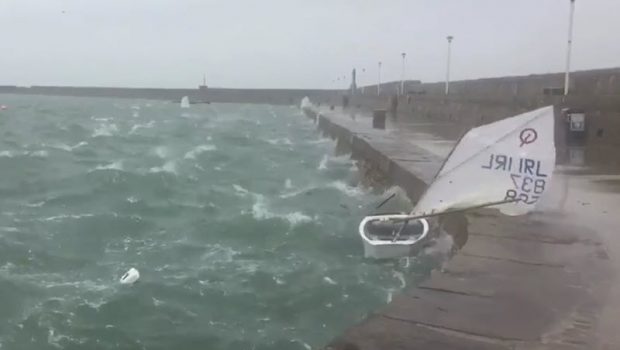


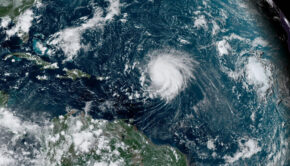
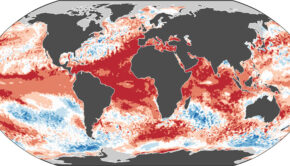
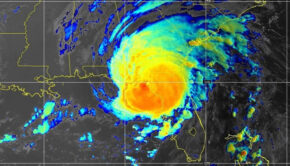
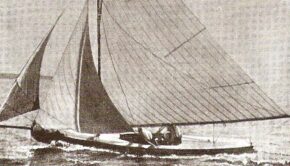
 We’ll keep your information safe.
We’ll keep your information safe.